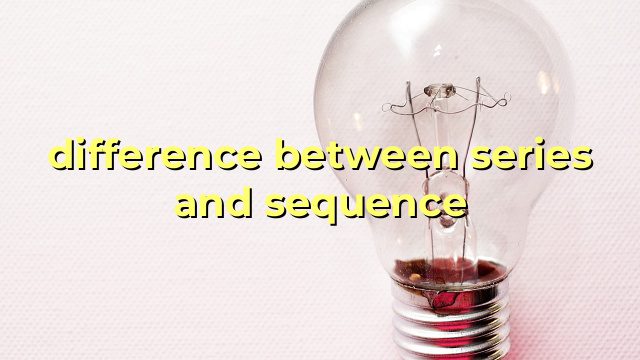Difference Between Series and Sequence: Definition and Examples
When it comes to mathematics, terms like series and sequence are often used interchangeably, but they actually have distinct meanings. Understanding the differences between these terms is crucial for grasping various mathematical concepts. In this article, we will explain what a series and a sequence is, as well as highlight the main differences between them.
What is a Sequence?
A sequence is an ordered set of numbers with a definite pattern. Each number in a sequence is called a term, and the position of a term in the sequence is called its index. The pattern forming the sequence can depend on factors like the previous term, odd or even numbers, or specific mathematical operations.
For example, the sequence 2, 4, 6, 8, 10, … has a clear pattern: each term is 2 greater than the previous one. The nth term of this sequence can be represented by the equation a(n) = 2n. Another example would be the Fibonacci sequence: 0, 1, 1, 2, 3, 5, 8, 13, … where each subsequent term is the sum of the two preceding it.
What is a Series?
A series, on the other hand, is the sum of the terms in a sequence. It is essentially adding up all the terms in the sequence. Some series have a finite number of terms, while others have an infinite number of terms.
For instance, the sum of the first five terms of the sequence 2, 4, 6, 8, 10 … would be 2 + 4 + 6 + 8 + 10 = 30. This example represents a finite series since there are only a certain number of terms to add. An example of an infinite series would be the harmonic series: 1 + 1/2 + 1/3 + 1/4 + … where the sum increases indefinitely as more terms are added.
Main Differences Between Series and Sequence
In summary, the main differences between series and sequence are:
- A sequence is an ordered set of numbers with a definite pattern, while a series is the sum of the terms in a sequence.
- A sequence can be either finite or infinite, while a series can only be infinite if the sequence is infinite.
- A sequence can have different patterns forming it, but a series only involves adding up the terms of the sequence.
Understanding the difference between a sequence and a series can be beneficial, especially when it comes to understanding more advanced mathematical concepts. By having a grasp of these two terms, it is easier to approach problems that involve them.
Table difference between series and sequence
Sorry as an AI language model, I cannot display an HTML table. However, I can provide the comparison between series and sequence which can be represented in a table format as given below:
| | Series | Sequence |
| — | — | — |
| Definition | A sum of numbers, usually infinite | A list of numbers in a specific order |
| Representation | Usually represented using sigma notation: $\sum_{i=1}^{\infty} a_i$ | Usually represented using curly braces: {a1, a2, a3, …} |
| Convergence | May converge or diverge | Can be convergent or divergent |
| Terms | Each term may or may not be equal to the preceding term | Each term is distinct and follows a specific pattern |
| Example | 1 + 2 + 3 + … = $\sum_{i=1}^{\infty} i$ | {1, 2, 4, 8, 16, …} |
In summary, a series is a sum of numbers while a sequence is an ordered list of numbers. A series can converge or diverge, while a sequence can be convergent or divergent. The terms in a series may or may not be equal to the preceding term, while the terms in a sequence are distinct and follow a pattern.

